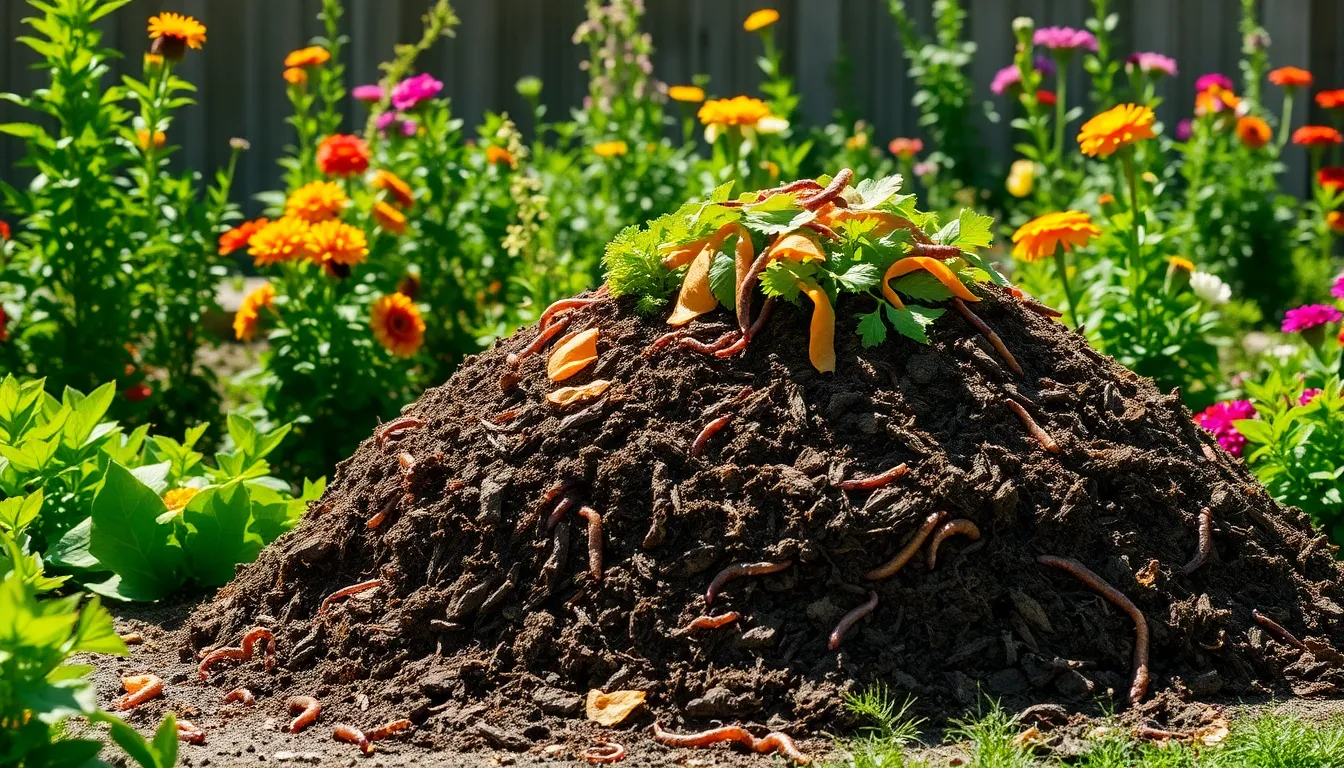Composting is the heart of a thriving garden, a magical process where kitchen scraps and garden waste transform into nutrient-rich gold. Whether you’re just sprouting your green thumb or have years of experience, starting a compost pile can seem both exciting and a bit daunting. It’s the perfect way to recycle organic waste and improve your garden’s health, creating a sustainable cycle that nurtures both your plants and the planet.
For those who are new to this earthy endeavor, fear not—you’re about to discover how simple and rewarding composting can be. In this article, we’ll guide you through the essential steps to kickstart your compost pile, from choosing the right location to understanding what materials to add and avoid. Seasoned gardeners will find new tips to enhance their composting techniques, ensuring their gardens flourish with even greater vitality. Together, we’ll explore the science behind soil enrichment and the art of turning waste into wealth for your garden.
By the end of this journey, you’ll have the knowledge to create a compost pile that suits your gardening needs and lifestyle. You’ll learn how to maintain the perfect balance of carbon and nitrogen, manage moisture levels, and troubleshoot common issues with ease. Composting is not just an environmentally-friendly practice; it’s a fulfilling ritual that connects us to the natural cycle of life. So, grab your garden gloves, and let’s turn your garden waste into the foundation of a flourishing oasis!
Understanding Composting Basics
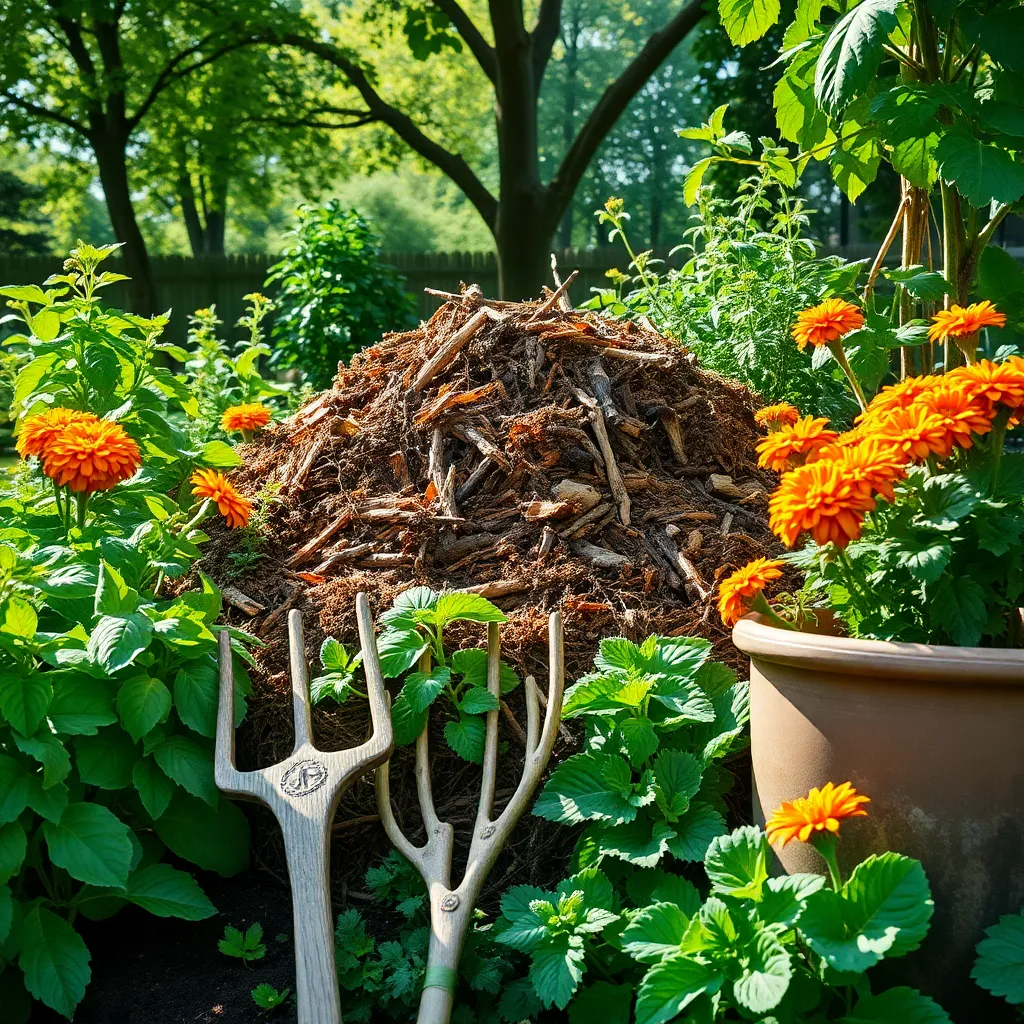
To begin your composting journey, understanding the basic components is essential. Composting requires a balance of three key ingredients: brown materials, green materials, and water.
Browns, such as dried leaves or straw, provide carbon, while greens, like vegetable scraps and grass clippings, supply nitrogen. The ideal compost pile consists of roughly three parts brown to one part green, ensuring a balanced nutrient mix.
Maintaining moisture is crucial, as a compost pile should be as damp as a wrung-out sponge. If your compost pile is too dry, it will slow down the decomposition process, while excess water can lead to unpleasant odors.
Turning your compost pile regularly helps aerate it, promoting faster breakdown of materials. Aim to turn the pile every two to four weeks, which will also help distribute moisture evenly.
For those ready to advance their composting skills, consider monitoring the temperature of your pile. A properly managed compost pile can reach temperatures between 130°F and 160°F, which helps kill weed seeds and pathogens.
To achieve these temperatures, ensure your pile is at least three feet high and three feet wide, which is the optimal size for heat retention. Remember, patience is key; with consistent attention and management, you’ll have rich compost ready to nourish your garden.
Choosing a Composting Method
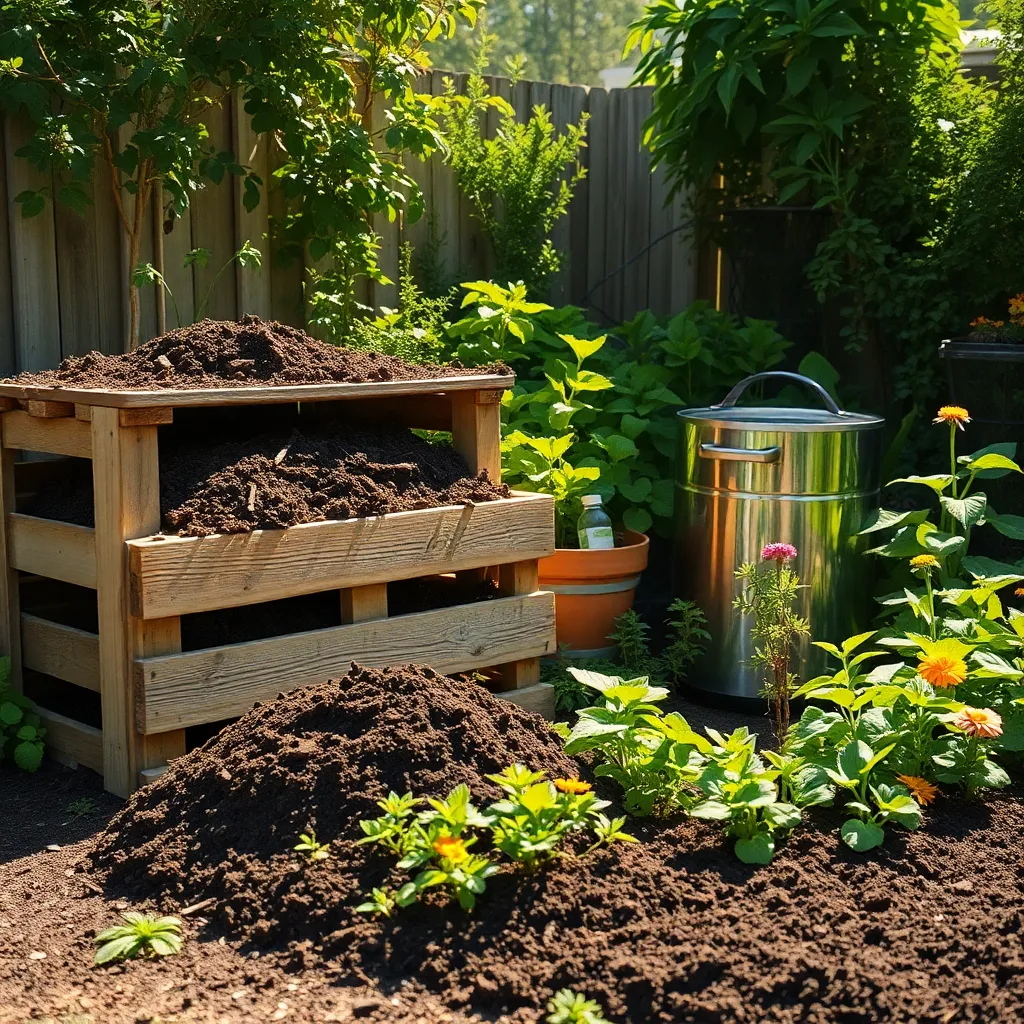
There are several composting methods to suit different needs and spaces, making it important to select the right one for you. Traditional composting involves creating a pile in a corner of your garden, which works well if you have ample outdoor space.
For those with limited room, vermicomposting is an excellent option, as it uses worms to break down organic matter indoors. This method requires a special bin and the right type of worms, such as red wigglers, which thrive in organic material.
If speed is a priority, consider using a compost tumbler, which accelerates the process by allowing you to easily mix the materials. By frequently turning the compost, you can achieve finished compost in as little as a few weeks, depending on the conditions.
For apartment dwellers or those seeking a low-maintenance option, bokashi composting offers an indoor solution where kitchen scraps are fermented using bran inoculated with beneficial microbes. This method is odorless and compact, making it ideal for small spaces.
Gathering Compostable Materials
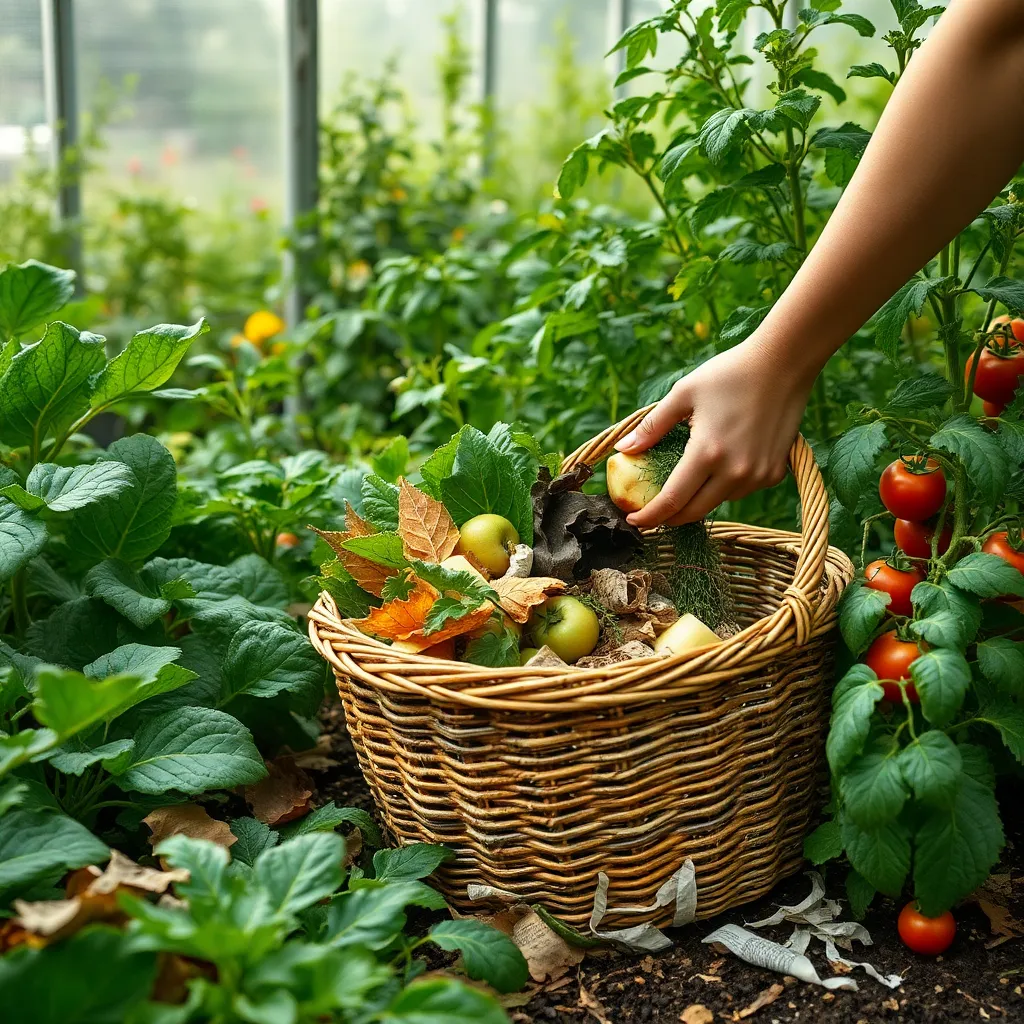
To start your compost pile, begin by gathering a variety of organic materials. **Kitchen scraps** such as fruit and vegetable peels, coffee grounds, and eggshells are excellent additions.
Incorporate **yard waste** like grass clippings, leaves, and small twigs to balance your compost. Aim for a mix of green materials, which are rich in nitrogen, and brown materials, which provide carbon.
Remember to avoid composting meat, dairy, and oils, as these can attract pests and create unpleasant odors. **Shredding larger items** like cardboard and branches will help speed up the decomposition process.
For those with more experience, consider adding **manure from herbivores** such as rabbits or horses, which can enrich your compost with nutrients. Be sure to layer your materials and **keep the pile moist**—think of it as a damp sponge rather than a soggy mess.
Maintaining Your Compost Pile
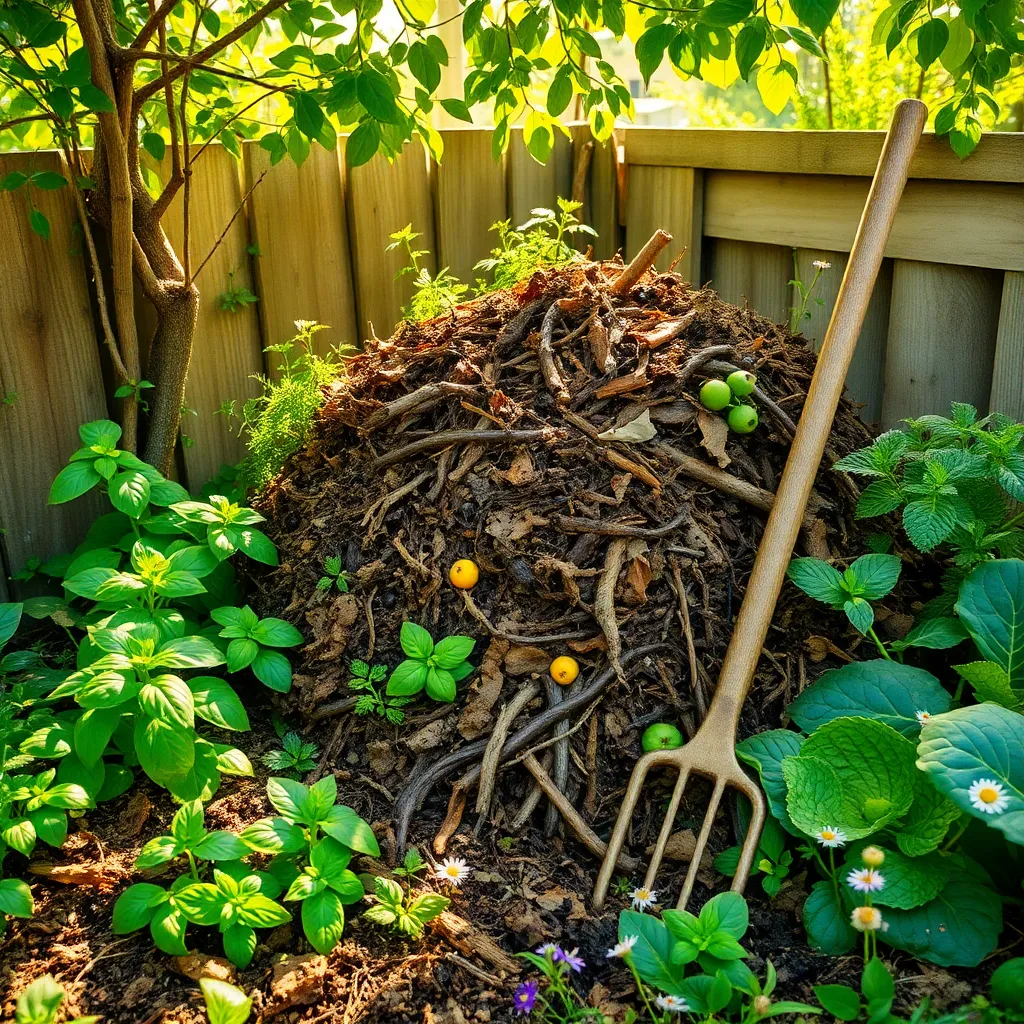
To maintain a thriving compost pile, it’s crucial to regularly turn the compost, which aerates the materials and speeds up decomposition. Use a garden fork or a compost aerator tool to turn the pile every two weeks, ensuring oxygen reaches all layers.
Keeping your compost pile moist is essential for microbial activity, but avoid making it too wet. Aim for the consistency of a damp sponge, and if needed, add water during dry spells or incorporate dry leaves to absorb excess moisture.
Temperature monitoring can help you gauge the composting process. A well-maintained compost pile will heat up as microbes break down materials, so if you notice cooling, turning the pile or adding more green materials like grass clippings can help reignite the process.
For those looking to speed up composting, consider chopping larger materials into smaller pieces. This increases the surface area for microbes to work on, accelerating decomposition and producing finished compost more quickly.
Using Finished Compost Effectively
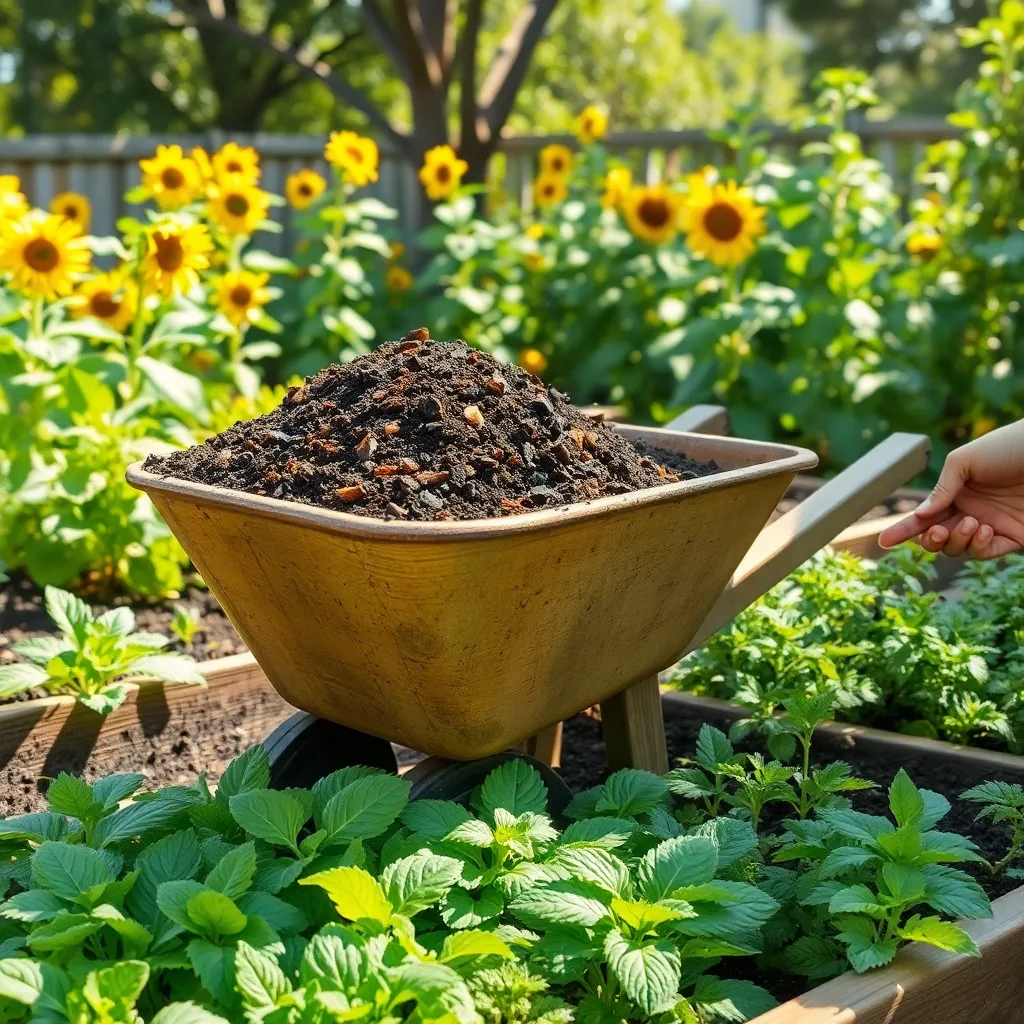
Now that your compost is ready, it’s time to put it to good use in your garden. Incorporating finished compost into your soil can significantly improve its structure, enhancing both drainage and water retention capabilities.
Begin by spreading a layer of compost about one to two inches thick over your garden beds. Use a rake or a tiller to gently work it into the top six inches of the soil, allowing the nutrients to enrich the root zone where plants can readily access them.
For container gardening, mix finished compost into your potting soil at a ratio of about one part compost to two parts soil. This boosts nutrient content and helps retain moisture, making it especially beneficial for thirsty plants like tomatoes and cucumbers.
Consider using compost as a top dressing around established plants. This method not only adds nutrients but also helps suppress weeds and maintain soil moisture, reducing the need for frequent watering.
If you’re an advanced gardener, try brewing compost tea by steeping compost in water for a few days. Use this nutrient-rich liquid as a foliar spray or directly on the soil to provide an instant nutrient boost to your plants.
Conclusion: Growing Success with These Plants
In summarizing the key insights from “What Is Start A Compost Pile,” we explored five essential relationship concepts: nurturing connections by embracing patience, fostering growth through active listening, valuing each partner’s unique contributions, learning from past experiences for future improvement, and cultivating a supportive environment to thrive together. These principles create a solid foundation for any relationship, much like a well-tended compost pile enriches the soil.
As an immediate step, take a moment to engage in a meaningful, distraction-free conversation with your partner today. This simple act of listening can invigorate your relationship, demonstrating your commitment to growth and understanding.
Remember, relationships, like composting, require ongoing effort and attention. Be sure to bookmark this article for quick access to these valuable tips whenever you need them. Saving it now will provide you with a ready reference to revisit as you nurture and grow your relationship.
Looking ahead, let this be the beginning of a journey toward deeper connection and lasting success in your relationships. With each step you take, you’re investing in a richer, more fulfilling partnership. Embrace this opportunity with open arms and an open heart.

